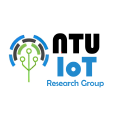Research Focus
1. IoT sensing systems and applications
 |
a. Powerline radiation sensing The periodic electric and magnetic fields emitted by the service power cables distributed in civil infrastructures provide both time and location information. Our research exploits these fields to develop clock synchronization, natural timestamping, localization, and device authentication services for indoor and wearable IoT objects. |
||
 |
b. LoRa radio sensing LoRa is a low-power wide-area network (LPWAN) technology that can interconnect IoT objects distributed in large geographic areas or deep indoor/underground structures. Its long-range communication capability enables wide-area sensing using its own radio frequency signals. We sense the arrival time, frequency bias, and strength of LoRa signal for data timestamping, network security, and object localization. |
||
 |
c. Acoustic and imagery sensing Acoustic and imagery sensing provides abundant information, but also imposes challenges on efficient processing on resource-constrained IoT objects. With deep learning techniques, we develop coordinated signal processing algorithms running on IoT objects and edge/cloud servers for indoor localization, voice recognition, and image-based object detection systems. Our systems are being deployed to manufacturing production lines. |
||
 |
d. Building sensing We are interested in designing networked sensing systems to monitor the energy consumption and indoor conditions in various types of building environments (households, offices, data centers). Our research work provides enabling technologies for implementing very energy-efficient data centers in Singapore’s year-round hot and humid tropical condition. |
2. Security and privacy of AIoT sensing
 |
a. Secure sensing in AIoT Deep neural networks have brought performance breakthroughs for sensing systems but also undesirable system complexities that may engender security vulnerabilities. The adversarial example attack is such an instance. We design and implement countermeasures that can be used by resource-constrained IoT devices against the adversarial example attack. |
||
 |
b. Privacy-preserving sensing in AIoT Many IoT sensors operate in privacy-sensitive spaces and times. We design efficient approaches for resource-constrained IoT sensors to enable deep neural network-based learning and inference on the sensing data while protecting the users’ privacy. |
